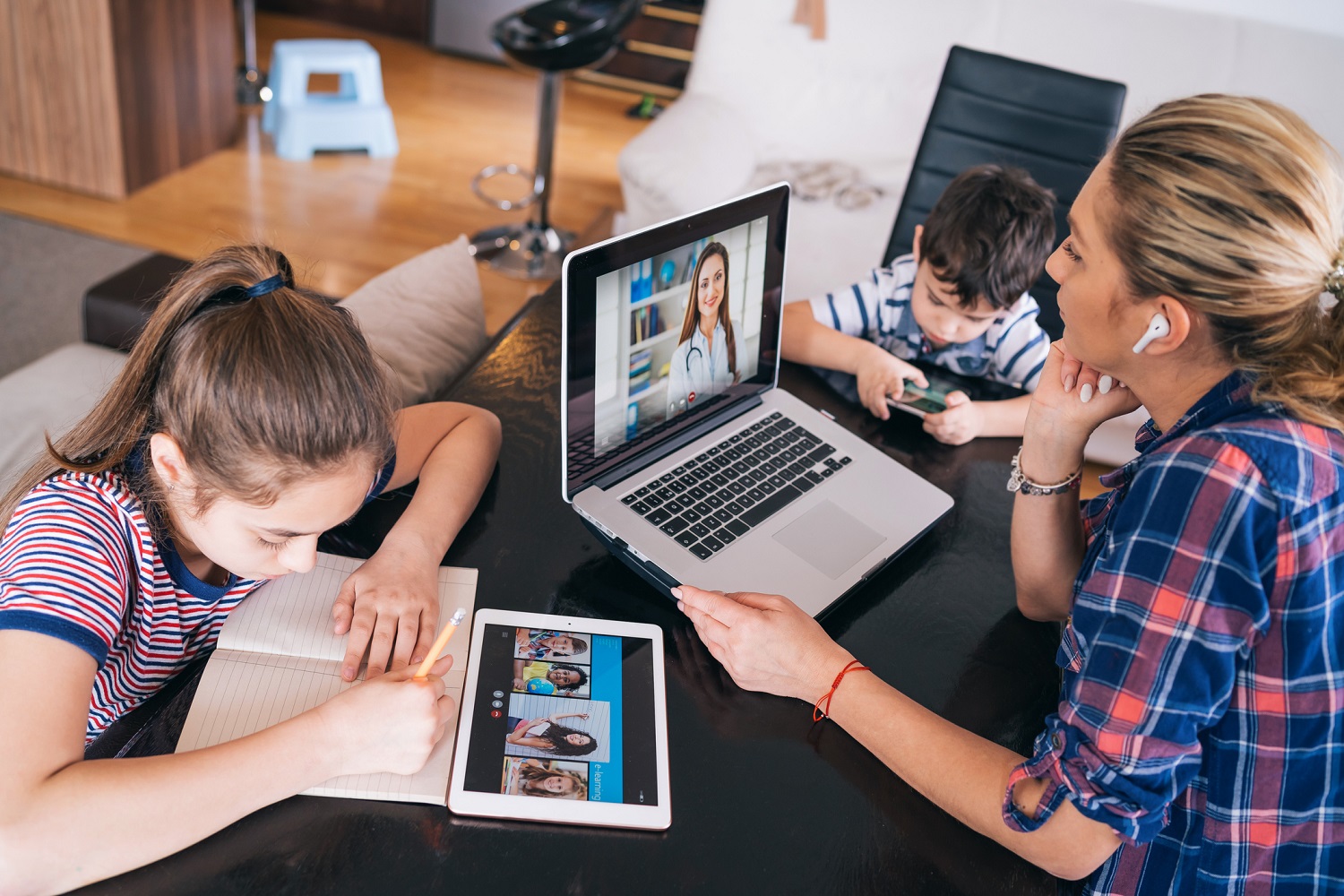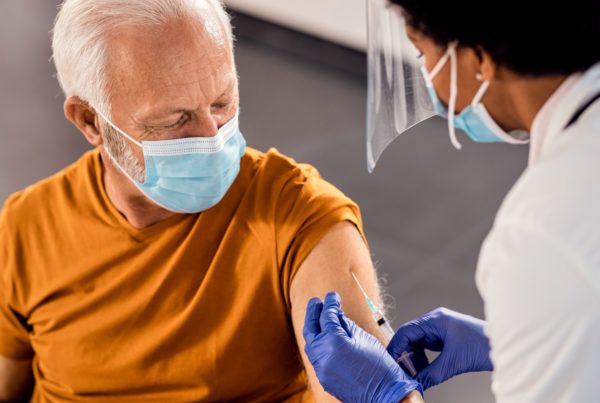
We are living in a very difficult time. Yes, that is the understatement of the year.
Many of us are frustrated by having to adhere to the public health measures of hand-washing, avoiding indoor spaces as well as social gatherings, wearing a face mask and physical distancing.
- “Why are we forcing everyone in society to abide by public health measures like masking, physical distancing and limiting their social contacts?”
- “Isn’t it better for all low-risk people to get infected so we can achieve herd immunity?”
- “High-risk people, or those who are concerned, should stay home but we should let all others get back to their normal lives to keep the economy going.”
- “Facts, not fear”
These are some of the many statements I have read on social media and heard in my own social circles. It is not easy to live our lives this way. It all happened so suddenly. We want our lives back.
However, the known facts about this virus are what they are. It is the situation we find ourselves in and we have yet to figure out a way to fundamentally change it. Indeed, the virus is in charge. And like any virus, it does not care about our lives. It has its own selfish agenda: to infect all of us. And it will do just that if given the opportunity.
Like Nothing I Have Ever Seen Before
So, if we are low risk, should we just let ourselves get infected and “get it over with”? Doing so could potentially lead to herd immunity, a state where the infection cannot spread as easily in the population as levels of immunity in the population are sufficient.
I must admit, it is what I first felt when this virus came on the scene. Initially it seemed like the data was showing that the mortality was only slightly higher than the flu. Back then, there was no talk of long-term health issues related to infection.
But then I started treating cases in the emergency room where I work and began to better appreciate the multi-organ issues faced by those who become seriously unwell. My colleagues began seeing cases and we shared stories. I watched closely what happened in places like New York City, Northern Italy and the southern USA.
I now feel quite differently about it. It became quite clear that this virus was completely different than anything we had seen before, and I have been in practice for 24 years. I spoke with my expert colleagues in infectious diseases who understand this complex subject better than I do and they felt the same way.
As we have understood more and more about this virus and its effects, right now I would rather not get infected by it. I would rather continue to do my best to avoid it.
Here are five reasons why:
- There is a significant risk of being hospitalized
If you look at the data in Canada, there is a significant risk of becoming so sick that you will require hospitalization. Usually it would be for breathing issues where you require supplemental oxygen to maintain adequate oxygen levels. However, it can sometimes mean that an oxygen mask is not enough, and you need to be on a ventilator or a breathing machine and admitted to the ICU.
If we look at the Canadian data, we will see that, as of September 24th, there have been 20,519 cases of COVID-19 for those aged 50-59. Of these, 1,648 people have been hospitalized and 505 have been hospitalized in the ICU.
So, if I am infected and become sick enough that am identified through testing, as a 53-year-old, I have an 8% chance of being hospitalized and a 2.5% chance of being in the ICU. Now in reality, I am fortunately healthy with no significant health problems, so my actual risk is lower than those numbers. Individuals who are higher risk are more likely to have the adverse outcomes.
There are also far more actual cases of COVID-19 in my age group than 20,519. Since many had few or no symptoms, they have not been tested and therefore have not been identified. This reality makes me feel somewhat better about my odds, but I’m still a bit concerned.
I know I would not take a medication for a minor medical problem if I were told that roughly one in 20 people taking it would end up in the hospital or one in 75 would end up in the ICU. If you think those numbers are too high, how about a one in 40 chance of ending up in hospital? I would rather not risk it.
Now if you are younger, the risks are obviously significantly lower. If you are 32, based on the current known cases in Canada, you have a 2.7% chance of being hospitalized and a 0.6% chance of ending up in ICU. Again, the actual risks are lower than this because we do not identify all cases with testing. A risk of an immediate bad outcome is very low for anyone less than 40, but there are other issues to consider, as outlined below.
- There is a risk of having long-term health problems
I am a bit concerned about developing long-term health problems if I become infected. There are many previously healthy patients that I have been seeing – some of whom were not even significantly unwell with the virus or needed hospitalization – who have found that they still have lingering symptoms many weeks or months after seeming to recover.
The virus appears to induce widespread inflammation of the body’s organs. The question at this point is how clinically significant is this? We do not have specific data on it yet. Remember that we are only eight months into this pandemic, and we are still learning.
We do have some early data on hospitalized patients in Italy. In a study of 143 patients who had been hospitalized, – seven of them ventilated in the ICU, – only 13% of them were symptom-free 60 days after disease onset1. Fatigue, shortness of breath, joint pain and chest pain were common lingering symptoms in these patients. In another study that looked at 292 patients in the outpatient setting, only 65% reported a return to their baseline health 2-3 weeks after diagnosis2.
Of some concern are studies that looked at heart and lung function after COVID-19. Studies have shown that there may be ongoing respiratory and cardiac impairment after COVID-19, even in those who were not hospitalized3-6. However, this data is still emerging, so we do not understand the full clinical significance of it yet. It may end up being not all that concerning and let us hope so.
There are other more long-term potential effects of infection that we sometimes see with other viruses. These effects include increasing the risk of developing certain cancers like lymphoma many years after infection. I say this not to cause unnecessary fear and anxiety, as it is quite possible and more than likely that this will not turn out to be the case at all.
But I want to make the important point that we should all be humble about this whole situation. We sometimes do not know things in medicine until we study them carefully over time. We should not be encouraging people to become infected until we have a clear picture of the risks. We should not be declaring with absolute certainty that infection carries with it little to no appreciable long-term risk.
I am always wary of people who are so sure of themselves and discuss complex medical issues as if the path forward is entirely clear. It rarely is. Based on what we know now, I would rather not roll the dice at this point and risk long-term health issues.
- I do not want to infect others
One of my biggest concerns is getting infected and then unknowingly passing it on to one of my family members who then passes it on to others, particularly others who are high risk. This factor is what people under 50 years old who have no risk factors need to think about.
We know that as many as 40% of people can be asymptomatic and have the potential to infect others. It is important to appreciate just how infectious this virus is and there is good research and firsthand experience that shows that even if infections are limited to low-risk individuals, it will eventually spread to the more vulnerable in time.
Imagine if we lifted all public health restrictions on low-risk individuals who all resume their “normal lives”. Cases would skyrocket in that population so much so that most experts believe we would eventually face a major public health crisis. In a complex society with all sorts of interactions, it is almost impossible to contain infection to low-risk individuals while keeping the high-risk people safe. It just does not work. So many people interact daily with those at risk, we could not possibly separate everyone off in society like that.
This Twitter thread from an epidemiologist gives a detailed explanation on why attempts to reach herd immunity this way are so problematic to carry out in the real world. Many people are advocating for this strategy currently, but I have yet to see a carefully laid out plan that explains exactly how we would accomplish it. Logically, the concept makes sense; it is the actual details of carrying it out that do not.
Right now, we need to focus on what we can do best and not embark on such experiments at such a pivotal time in the pandemic.
- I do not want to risk being sick at home for several weeks
One other factor is the possibility of being sick for several weeks, or even longer.
The WHO states that recovery time is typically around two weeks for mild infections. However, it is variable and depends upon several factors such as age and pre-existing comorbidities.
Being unwell for several weeks would have a huge effect on most of our lives, particularly those of us with children or other ongoing responsibilities like our jobs and looking after other loved ones in our bubble.
- There is a very small chance of dying.
If I look at the Canadian data, there were 221 deaths in 50-59-year-olds, out of 20,519 cases. These numbers would mean a risk of death of 1.1%.
Now in reality, as previously discussed, my actual risk as an individual would be much lower. However, based on this data, a risk of death of 0.1 to 1% is not something to completely dismiss as irrelevant. I certainly would not go on an airplane if I knew that one in 100 of them crashed or even if one in 200; even one in 500 of them for that matter.
I might do it if I absolutely had to, but I would rather wait until airplanes were made safer before I went on one again.
We need a more robust solution to COVID-19 that reduces our risks to more acceptable levels. A vaccine is looking like it will be helpful to reduce our overall risks, but we must patiently wait until we have the data that shows that it is indeed the case. Drug therapeutics will hopefully come with time.
Currently we have no therapies that have become game changers in the treatment of infection. I have no doubt that we will eventually have effective treatments, but we must realize that science does take time.
An Honest and Transparent Discussion
I do find it difficult to talk about this subject because I do not want people to walk around being fearful about getting COVID-19.
If I were infected, I would not be overly worried. It is important to emphasize that most people have a mild case with no long-term problems. I have seen many older patients with several risk factors do completely fine. And anyway, fear and panic do not help in this or any situation.
However, at the same time, we do need to be aware of the facts, even if they are somewhat uncomfortable and unsettling. Facts need to be presented without an underlying agenda of proving a personal bias. Minimizing the risks or making definitive conclusions before we have the actual data and scientific understanding is not the way to eliminate panic and fear.
Panic and fear are best addressed by a thoughtful, honest, and transparent discussion of what we know and what we do not know as well as a clear and actionable plan to approach it all to minimize risk until we know better. We must be open to change and altering our course of action when we obtain new information.
The overwhelming majority of infectious disease specialists and epidemiologists feel that allowing widespread infection among low-risk individuals will lead to a public health crisis. The health care system will be overwhelmed, and people will die unnecessarily. Many will end up with lifelong medical problems. It cannot be adequately contained, as much as we would like to believe that it will.
That is where we are right now. And yes, it is most unfortunate.
Here to Stay
Many people may ask: “but where are we going with this then?”; “What is the end game, we all just avoid infection for the rest of our lives?”; “Aren’t we just postponing the inevitable?”
These points are all great, and they are the right questions to ask. Our current approach has significant risks to mental health and the overall functioning of our society that should not be minimized. This virus is indeed here to stay. It will eventually infect most of us.
Right now, however, we simply are not at the point that we can let it run rampant across the population. We must wait until we have better solutions. We should not get on that plane right now if we can avoid it.
The best solution is to try to keep our lives going within certain restrictions to minimize risk. Many call it a lockdown, but in fact it is not. It is to prevent another lockdown.
A lockdown is when there is a mandated stay-at-home order and we cannot leave our homes, like what occurred back in March. Social interactions are kept to an absolute minimum on an as-needed basis only, which is not the case right now.
Making the Best Out of a Bad Situation
We have learned a lot about this virus and how it is transmitted. We can minimize spread by living our lives within some constraints. Fortunately, these restrictions do not have to close our schools, confine most us to our homes and eliminate all forms of social interaction. I look at the public health restrictions as a way to keep us up and running as best we can. They are our attempt to make the best of a bad situation but we must realize that many will still suffer because of them.
However it needs to be acknowledged that this point in history is where all of us as a society need to better support each other and do what we can to help those who are in need at this difficult time. We are in an unprecedented situation, but I know that we will all get through it and better days are ahead.
Sources:
- Carfì A, Bernabei R, Landi F and Gemelli Against COVID-19 Post-Acute Care Study Group. Persistent Symptoms in Patients After Acute COVID-19. JAMA, 2020.
- Tenforde MW, Kim SS, Lindsell CJ, et al. Symptom Duration and Risk Factors for Delayed Return to Usual Health Among Outpatients with COVID-19 in a Multistate Health Care Systems Network — United States, March–June 2020. MMWR Morb Mortal Wkly Rep. 2020.
- Huang Y, Tan C, Wu J, et al. Impact of coronavirus disease 2019 on pulmonary function in early convalescence phase. Respir Res, 2020; 21:163.
- You J, Zhang L, Ni-Jia-Ti MY, et al. Anormal pulmonary function and residual CT abnormalities in rehabilitating COVID-19 patients after discharge. J Infect, 2020; 81:e150.
- Mo X, Jian W, Su Z, et al. Abnormal pulmonary function in COVID-19 patients at time of hospital discharge. Eur Respir J, 2020; 55.
- Puntmann VO, Carerj ML, Wieters I, et al. Outcomes of Cardiovascular Magnetic Resonance Imaging in Patients Recently Recovered From Coronavirus Disease 2019 (COVID-19). JAMA Cardiol., 2020.
About the Author
Dr. Michael Szabo is the Chief Medical Officer of Novus Health. He is an emergency physician at University Health Network in Toronto and a lecturer in the Department of Family and Community Medicine at the University of Toronto. Dr. Szabo has 25 years of experience providing front-line medical care. He has extensive experience with providing executive and concierge health care as well as expert medical second opinions.
For more valuable health information, visit our Ask the Expert page.



